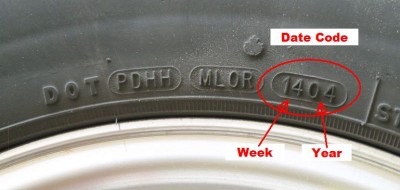Guide to Preparing Your RV for Storage Provided by Camping World
You’ve had a great year in your RV, and now it’s almost time to store it for winter. Follow this step-by-step guide to properly winterize and prepare your RV for long or short term storage.
Step-by-Step Guide to Winterizing Your RV
The following are general suggestions. Read your owner’s manual for winterization methods specific to your RV.
1 – Disconnect the outside water source. DO NOT DRAIN THE WATER HEATER until after you have filled your pipes with antifreeze.
2 – By-pass your water heater and follow all steps before continuing. By-pass any under-sink water filtration systems.
3 – Open the petcock to drain as much water from your pipes as possible. Open the water taps, and flush the toilet to drain any remaining water from the system.
4 – After draining as much water as possible, it is recommended a Blow Out Plug be attached to the Water Intake Fitting. Apply air pressure from an air compressor to drain the remaining water. Although blowing out the remaining water is not required, the remaining water will dilute your antifreeze. Close all faucets and petcock when complete.
5 – You can add antifreeze either from the inside using the Water Pump Conversion Kit or from the outside using a Hand Pump Kit. Be sure to check your progress by opening up one faucet at a time, starting from the highest and working to the lowest point in the fresh water system. Begin with the kitchen faucet. Open the HOT side of the kitchen faucet ONLY. Pump antifreeze until flow from the faucet becomes very pink. This will indicate that all water has been flushed from your system. Close faucet. Repeat on COLD side. Continue to the next lower fixture. This is normally the bathroom sink, then the shower and finally the toilet.
6 – Pour at least 2 pints of antifreeze into all sink & shower drains. The ice maker, washing machine and external shower will also need to be winterized. Look for this information in your appliance manuals. For instructions on your ice maker and washing machine, please contact an RV service center for details.
7 – Open drain plug/valve on water heater and leave open.
8 – Finally, leave antifreeze in lines until spring. Do not drain.
Key Points to Remember
• Work from highest to lowest point
• Flush toilet just before you drain water heater
• Drain water heater last
How RV Water Systems Work
Your RV’s water system draws water either from your fresh water tank and/or from the city water hookup. From the fresh water tank, a water pump is used to push water through the RV. (No pump is needed for water coming from the city hookup.) The water from the water tank and city water hookup will always be cold. To get hot water, the water must flow from your water pump into your water heater. The water is then heated and flows to your hot water fixtures such as your sinks and shower. When winterizing your RV, you will need to by-pass the water heater.
How to By-Pass Your Water Heater
By-passing the water heater can save you money by not having to fill the water heater with antifreeze, saving as much as 6 to 8 gallons of antifreeze. Some RVs come with a by-pass system pre-installed but many do not.
Before your start:
1 – Make sure to turn off all power to the water heater (the electric water heaters usually have their own power on-off switch).
2 – Disconnect the water supply.
3 – Make sure the water heater gas pilot is NOT lit.
Make sure your water heater remains full of water. If you have a by-pass system in place, go to step 3.
1 – If you need to install a by-pass system, disconnect hot and cold lines going into and out of the water heater.
2 – Connect by-pass. (See package instructions.) Be sure to use 3 to 5 turns of Teflon tape when attaching each connection.
3 – Close off hot and cold lines going into and out of the water heater.
4 – Open the by-pass.
View More Winterization Products >
For a more in-depth explanation of preparing your RV for winter, we have this DVD available: “RV Education 101: Winterizing & Storing your RV” DVD.


Good Sam
Ken – the city water inlet on the fifth wheel is for fresh water, so we’re a little unclear on how to answer your question. If you can provide some additional details, we will be happy to check into it for you.
ken kirkman
I do not understand how to winterize the fresh water side of the trailer (5th wheeler)
ken kirkman
I understand how to winterize the the “city” water side of our 5th wheeler. I do not understand how to winterize the fresh water side.
Jim
I put the drain plug in my water heater in after it was drained. I just wanted to prevent dirt and stuff from getting in it during the winter storage period. In past years I have left it out.
Paul
Have to agree with Larry; You’ve already bypassed the heater so you can certainly drain it first if you wish. And why not put the drainplug back?
LTC Larry
I do not understand the admonition not to drain the water heater u ntil after you have draines the system and put in the anti freeze. Also why leave out the water heater drain plug?